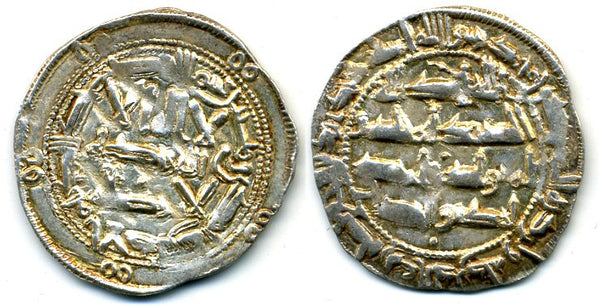
Arabic inscriptions: "There is no God except Allah alone. He has no partner" in the central field, "In the name of Allah this dirhem was struck at al-Andalus in the year two hundred and one" in the margins, all within a quadruple border with six annulets / "Allah is one, Allah is eternal. He begets not neither is he begotten" in the central field, "Mohamed is the prophet if Allah whom he sent with guidance and the religion of truth that he may make it victorious over every other religion" around. Minted in 201 AH = 816 AD, mint of al-Andalus (Cordoba in Spain). 26mm, 2.66 grams. Mitchiner WOI 317ff; "Monedas Andalusies" #706; Vives 110.
The Umayyads in Spain established their rule following the fall of the Umayyad Caliphate in Damascus in 750 CE. Abd al-Rahman I, a surviving prince of the Umayyad family, fled to the Iberian Peninsula and founded the Emirate of Córdoba in 756 CE, marking the beginning of Umayyad rule in al-Andalus (Muslim Spain). Over time, the emirate grew in strength and stability, and in 929 CE, Abd al-Rahman III declared himself Caliph of Córdoba, creating a rival caliphate to those in Baghdad and Cairo. The Caliphate of Córdoba became a center of culture, learning, and architectural brilliance, known for its religious tolerance and prosperity. However, internal divisions and civil wars led to its fragmentation in the early 11th century, giving rise to smaller taifa kingdoms. Despite this decline, Umayyad rule in Spain laid the foundation for centuries of Muslim presence and cultural flourishing in the Iberian Peninsula.
